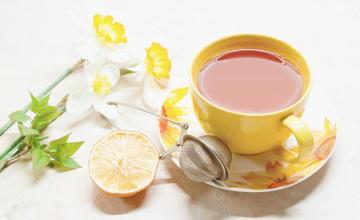Introduction to the Flavor and Taste characteristics of Yejashefi Coffee Manor
The so-called "Yega Chuefei" refers to strong aromas of jasmine, lemon or green citric acid, as well as sweet peaches, almonds and tea. The author's tasting experience has only one sentence: "Coffee entrance, flowers in full bloom!" Except for the comfort of the taste buds and olfactory cells in the nasal cavity touched by flowers. In addition to the fragrance of flowers, the delicate mellow thickness is like silk and feels wonderful to the touch. At present, many coffee chemists have begun to study the microclimate and soil and water around Yega Xuefei, in order to sum up the planting equation of fine coffee. Most coffee beans are washed with water, but a small number of crystal beans deliberately use the method of tanning. To enhance the charming fruit aroma and mellow thickness. These mountain villages are foggy, like spring all year round, with a gentle breeze in summer, cool but not hot, rain but not damp, and no cold damage in winter, giving birth to a unique "regional flavor" of citrus and flower fragrance. Caffeine F trees are mostly planted in farmers' own backyards or mixed with other crops in farmland, and the yield per household is not much, which is a typical pastoral coffee. Almost all of the award-winning beans come from the above-mentioned coffee villages and communities. At first, Yega Xuefei's coffee trees were planted by European monks (somewhat similar to Belgian monks who advocated planting wheat and brewing beer), and later transferred to farmers or cooperatives. Yejasuefei is actually built by surrounding coffee communities or cooperatives, including Edido, Hafsha, Hama and Bdon near Fog Valley. Strictly speaking, Yegashafi is a by-product area of Sidamo. Located in the northwest of Sidamo, with mountains and lakes, the town is one of the highest coffee-producing areas in Egypt. However, the mode of production and flavor here are so outstanding that Egyptian coffee farmers compete to be proud of the flavor of their coffee, so they are independent from Sidamo and form their own school. Yejasuefei, the most famous producing area in Africa, is a small town with an altitude of 120000m and 2100 meters above sea level, which is also synonymous with Ethiopian boutique beans. It has been a wetland since ancient times, and the ancient saying "Yega" means "settle down", and "Xuefei" means "wetland", so "Yejia Xuefei" means "Let's settle down in this wetland."

Important Notice :
前街咖啡 FrontStreet Coffee has moved to new addredd:
FrontStreet Coffee Address: 315,Donghua East Road,GuangZhou
Tel:020 38364473
- Prev

Panamanian Coffee Manor Flavor and Taste characteristics introduction to the planting Environment of Ireta Manor
Panama is located on the Panamanian isthmus in Central America, bounded by Colombia to the east, the Pacific Ocean to the south, Costa Rica to the west and the Caribbean Sea to the north. The territory is S-shaped to connect North and South America, and the Panama Canal connects the Atlantic and Pacific oceans from north to south. It is known as the bridge of the world. [5] Panama has a land area of 75517 square kilometers and a land length of 772km.
- Next

Introduction to the flavor and taste characteristics of Santa Rita Manor Coffee Manor in Colombia
Colombia has four treasures: flowers, gold, emeralds and coffee. You can see the importance of coffee Colombia. And there may be very few coffee in the world named after a country, such as Nestle Coffee and Blue Mountain Coffee are not named after a country. Colombia is the first country to use the name of the country as a brand of coffee. Colombian coffee is based on its quality, taste and
Related
- Does Rose Summer choose Blue, Green or Red? Detailed explanation of Rose Summer Coffee plots and Classification in Panamanian Jade Manor
- What is the difference between the origin, producing area, processing plant, cooperative and manor of coffee beans?
- How fine does the espresso powder fit? how to grind the espresso?
- Sca coffee roasting degree color card coffee roasting degree 8 roasting color values what do you mean?
- The practice of lattes: how to make lattes at home
- Introduction to Indonesian Fine Coffee beans-- Java Coffee producing area of Indonesian Arabica Coffee
- How much will the flavor of light and medium roasted rose summer be expressed? What baking level is rose summer suitable for?
- Introduction to the characteristics of washing, sun-drying or wet-planing coffee commonly used in Mantenin, Indonesia
- Price characteristics of Arabica Coffee Bean Starbucks introduction to Manning Coffee Bean Taste producing area Variety Manor
- What is the authentic Yega flavor? What are the flavor characteristics of the really excellent Yejasuffi coffee beans?

